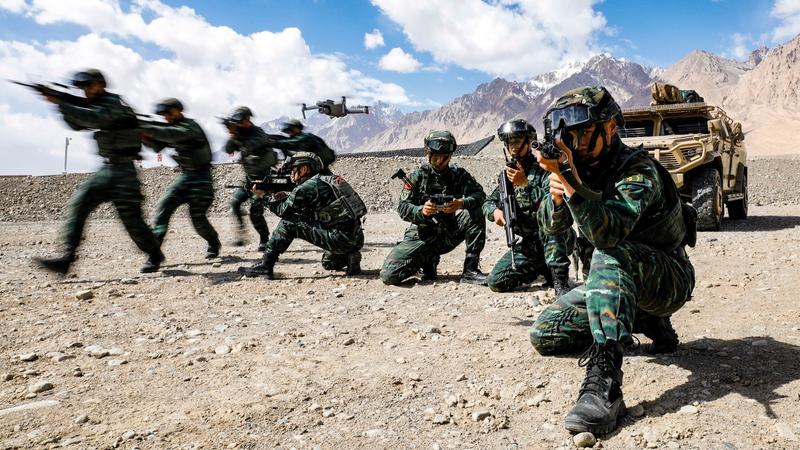Published 20:00 IST, May 21st 2024
China's Military Adapts with Counter-Drone Training Signaling Global Military Response to FPV Threat
The video, aired by state-run CCTV7, shows PLA soldiers practicing defensive measures and deploying countermeasures against FPV drones.

Beijing: China has recently showcased video footage of its People's Liberation Army (PLA) training to counter first-person view (FPV) drones. The footage highlights the growing necessity for military forces worldwide to develop strategies against these munitions. FPV drone capabilities were rapidly advanced during the war in Ukraine, where they have become a critical element on the frontlines. This technological proliferation has now reached other global hotspots, prompting armed forces, including the U.S. military, to adapt through training and adoption of FPV drones.
The video, released by China's state-run CCTV7 network, shows PLA soldiers practising defensive measures against FPV drones. The exact location and date of the footage remain unclear. The majority of FPV drones, primarily used for precision attacks, operate with man-in-the-loop control, requiring continuous line-of-sight communication between the drone and its operator. This can be disrupted by factors such as distance and terrain, but manual control allows for high manoeuvrability and target switching on the fly.
PLA Training Tactics and Countermeasures Against FPV Drones
The footage begins with an operator launching one of the drones while wearing VR-like goggles. As the exercise progresses, five FPV drones are seen in the air. Personnel quickly take defensive positions behind concrete tank traps as the munitions fly overhead. At one point, a soldier rapidly seeks cover from a simulated explosive, indicating the potential impact of an FPV drone or a bomblet from a quadcopter.
In addition to defensive training, PLA soldiers explore methods to neutralize drones. The video shows a soldier deploying a drone-catching net projectile and another using an anti-drone jammer gun. These exercises underscore the urgent need to counter the increasing threat posed by drones, including commercial variants that have become more sophisticated and accessible.
Global Implications and Adaptations in Military Training
China's focus on developing drone technologies spans various capabilities, including FPV drones and swarm tactics. Recent state media releases show PLA soldiers engaging in FPV drone exercises targeting armoured vehicles and mock enemy positions. Paramilitary People's Armed Police (PAP) personnel have also been seen performing challenging aerobatic and kinetic targeting flights with FPV drones, manoeuvring through obstacle courses simulating urban environments.

The war in Ukraine has significantly influenced these tactics. FPV drones have become essential for both sides, used effectively to target tanks, soldiers, and vehicles even within buildings. Their widespread use rivals artillery in battlefield effectiveness, prompting urgent development of countermeasures. Both Ukraine and Russia are in a production race, with Ukraine aiming to acquire around a million FPV drones this year, and Russia rapidly increasing its stockpiles.
U.S. Military's Response and Future of Drone Warfare
The rising threat of FPV drones has led armed forces worldwide to develop anti-drone defences and new tactics. The U.S. military has established a drone defence training school, and the Marines are working to make every soldier capable of defending against drones. Additionally, the U.S. is slowly adopting FPV drone capabilities, with special operations forces training abroad to use improvised types similar to those in Ukraine.
The Chinese military's training to defend against and operate FPV drones reflects the rapid evolution of lower-end drones in modern warfare. As these technologies become more dangerous and ubiquitous, armed forces must continuously adapt to maintain their strategic advantage. The integration of FPV drones into military strategies highlights the shifting dynamics of warfare and the increasing importance of technological innovation on the battlefield.
Updated 20:00 IST, May 21st 2024




